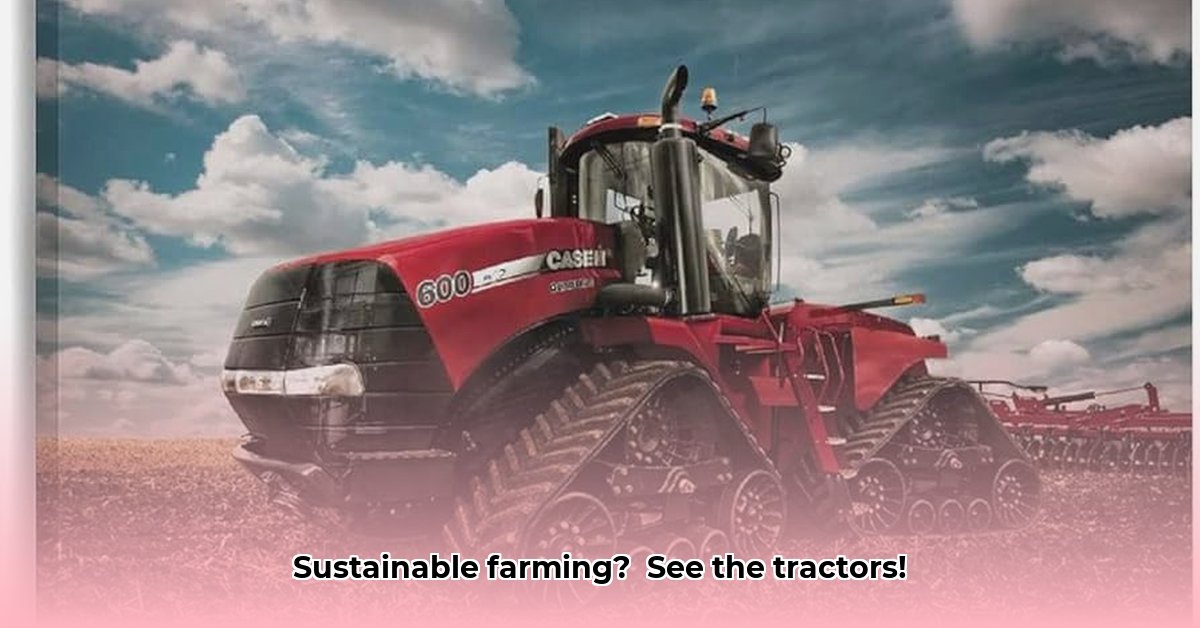
More Than Just Machines: Tractors and the Story of Agriculture
Tractor posters. At first glance, they might seem simple – just a picture of a tractor, perhaps some text. But these images are powerful tools for promoting sustainable farming. Tractors themselves represent a rich history, embodying both tradition and progress in agriculture. Early models, symbols of hard work and ingenuity, stand in stark contrast to the sophisticated, fuel-efficient technology of modern tractors, showcasing the evolution of farming practices. This technological advancement is crucial to sustainable agriculture, enabling effective and eco-friendly methods. Modern tractors are vital for the future of sustainable food production, allowing farmers to minimize environmental impact while maximizing yield. Do you realize how much this evolution has changed the face of farming? For more on agricultural careers, check out this resource.
Tractor Posters: A Powerful Visual Language
How do we effectively communicate the shift towards sustainable agriculture? Tractor posters provide a surprisingly effective means of disseminating this crucial message. A vibrant poster depicting a modern tractor working a fertile field instantly connotes efficiency, progress, and environmental responsibility—all without relying on lengthy descriptions. A well-designed poster series could educate the public about sustainable practices, such as reduced-till farming, crop rotation, or water-saving irrigation techniques. This visual storytelling approach is capable of significantly increasing awareness, promoting eco-friendly products, and inspiring further engagement with sustainable agriculture.
The Art of Persuasion: Making Sustainability Appealing
Effective tractor posters aren't merely informative; they’re engaging. They leverage the power of visual design to create an emotional connection. A striking image—perhaps a breathtaking sunset over a thriving farm coupled with a concise, memorable slogan—proves far more impactful than dense text. The design elements are critical. Experts suggest employing bold colors, captivating imagery, and perhaps even touches of nostalgia to resonate with those who value traditional farming methods. The objective is to captivate a broad audience, generating attention and lasting impact. The result? A poster that is both informative and inspiring. Did you know that visually engaging content often boasts a significantly higher engagement rate?
Case Studies: Imagining the Possibilities
While comprehensive case studies of large-scale tractor poster campaigns for sustainable agriculture remain limited, we can easily envision their potential. For example:
| Campaign Theme | Poster Imagery | Message |
|---|---|---|
| Reduced Tillage | A tractor gently working soil, healthy crops emerging | Less soil disturbance, improved soil health |
| Precision Agriculture | High-tech tractor with GPS, precise crop spraying | Efficiency, reduced resource consumption |
| Water Conservation | Drip irrigation system in action, lush crops | Saving water, protecting our resources |
| Supporting Local Sustainable Farms | Farmer standing proudly in field, fresh produce basket | Buying local: Supporting sustainable farmers |
These examples demonstrate the expansive potential of this approach. Each poster tells a compelling story, sharing successes and inspiring action. This visual communication method is especially effective at bridging language barriers and fostering cross-cultural engagement with sustainable practices.
The Broader Picture: Visuals and a Sustainable Future
Tractor posters are more than just about tractors; they represent the larger movement toward sustainable agriculture. They act as tools to communicate complex ideas, create genuine engagement, and illustrate that sustainable farming is not only feasible but crucial. They offer a powerful and accessible means of promoting change. Further research into their specific effectiveness across various contexts would generate invaluable insights. The future of employing visual strategies like these for sustainable farming holds immense potential. Indeed, how else might we efficiently communicate such complex concepts to a vast global audience?